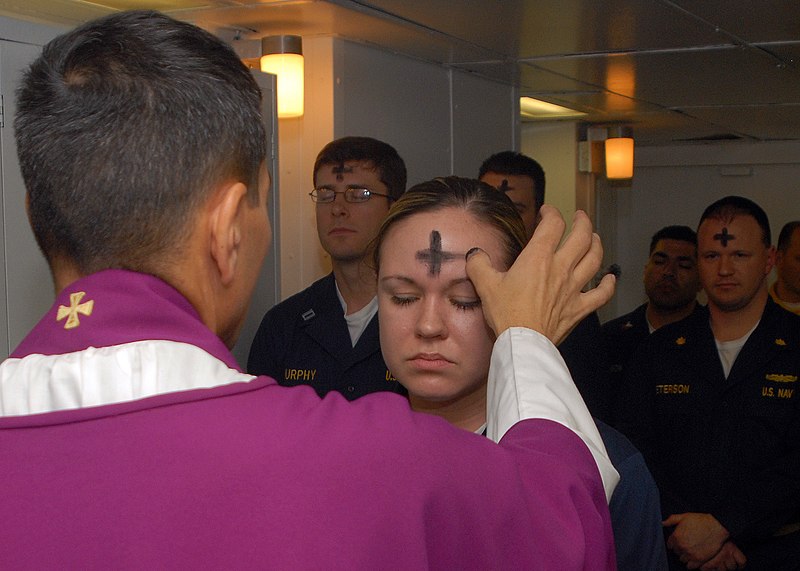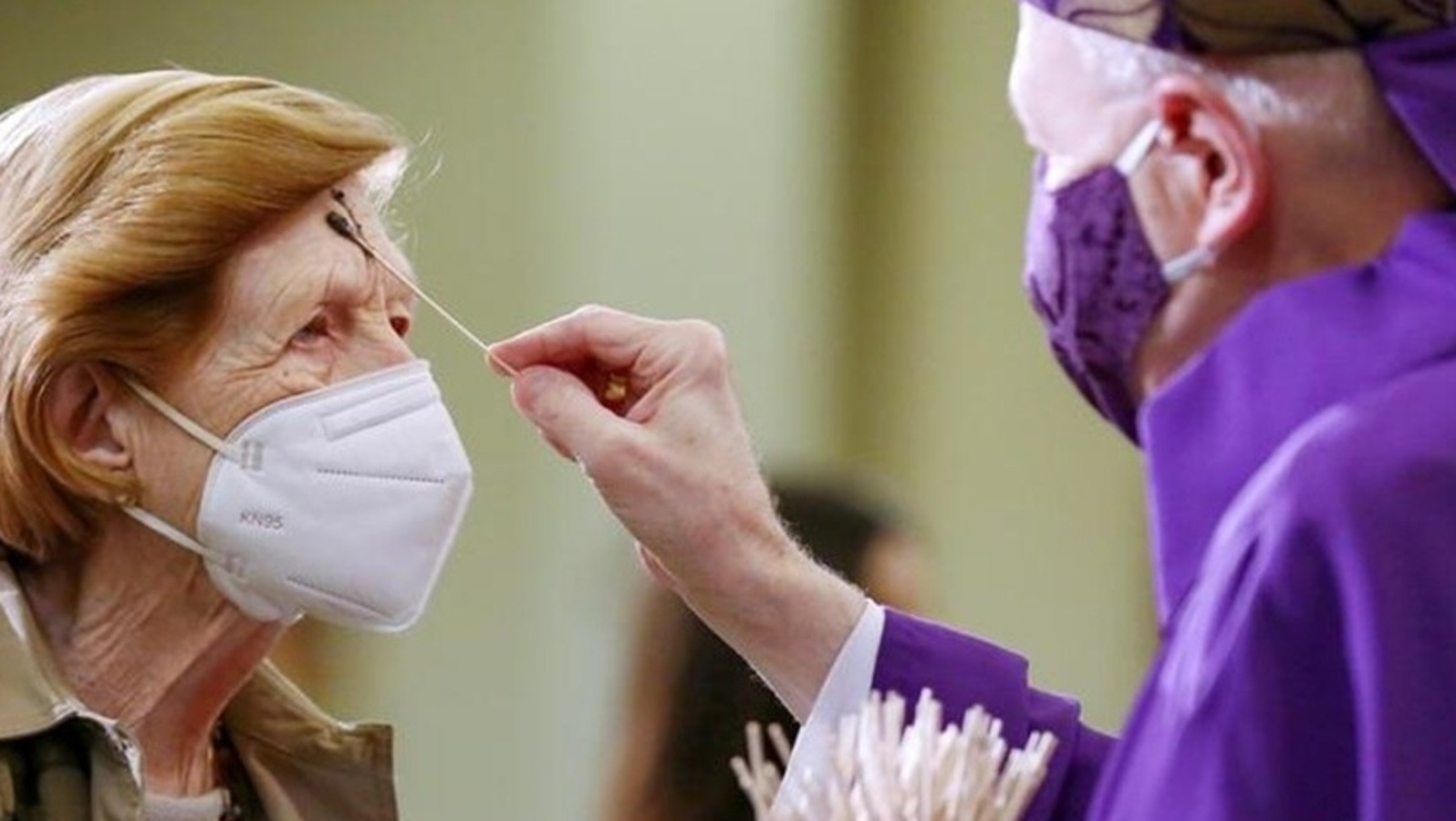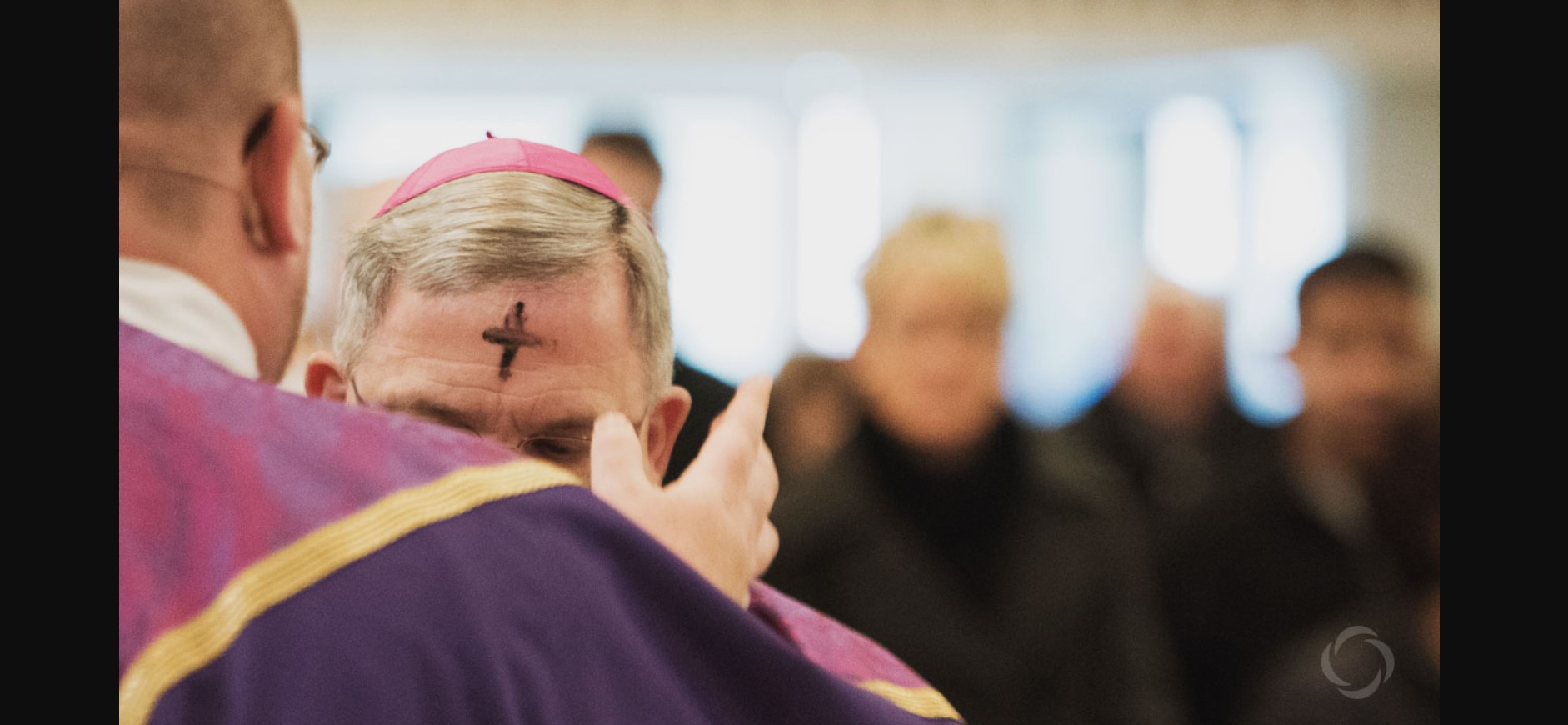Ash Wednesday is a holy day of prayer and fasting in many Western Christian denominations. It is preceded by Shrove Tuesday and falls on the first day of Lent[2] (the six weeks of penitence before Easter). It is observed by Catholics in the Roman Rite, Lutherans, Moravians, Anglicans, Methodists, Nazarenes, as well as by some churches in the Reformed tradition (including certain Congregationalist, Continental Reformed, and Presbyterian churches).[3]
As it is the first day of Lent, many Christians begin Ash Wednesday by marking a Lenten calendar, praying a Lenten daily devotional, and making a Lenten sacrifice that they will not partake of until the arrival of Eastertide.[4][5]
Many Christians attend special church services, at which churchgoers receive ash on their foreheads. Ash Wednesday derives its name from this practice, which is accompanied by the words, "Repent, and believe in the Gospel" or the dictum "Remember that you are dust, and to dust you shall return."[6] The ashes are prepared by burning palm leaves from the previous year's Palm Sunday celebrations.[7]
Ash Wednesday is observed by numerous denominations within Western Christianity.[8] Roman Rite Roman Catholics observe it,[note 1] along with certain Protestants like Lutherans, Anglicans,[8] some Reformed churches,[11][12] some Baptists,[13] Methodists (including Nazarenes and Wesleyans),[14][15] the Evangelical Covenant Church,[16] and some Mennonites.[17][18] The Moravian Church[19][20] and Metropolitan Community Churches observe Ash Wednesday.[21] Churches in the United Protestant tradition, such as the Church of North India and United Church of Canada honour Ash Wednesday too.[22] Some Independent Catholics,[23][24] and the Community of Christ also observe it.[25]
Reformed churches have historically not observed Ash Wednesday, nor Lent in general, due to the Reformed regulative principle of worship.[26][27][28] Nevertheless, some churches in the Reformed tradition do observe Lent today, although often as a voluntary observance.[29] The Reformed Church in America, for example, describes Ash Wednesday as a day "focused on prayer, fasting, and repentance."[3] The liturgy for Ash Wednesday thus contains the following "Invitation to Observe a Lenten Discipline" read by the presider:[30]
We begin this holy season by acknowledging our need for repentance and our need for the love and forgiveness shown to us in Jesus Christ. I invite you, therefore, in the name of Christ, to observe a Holy Lent, by self-examination and penitence, by prayer and fasting, by practicing works of love, and by reading and reflecting on God's Holy Word.[30]
The Eastern Orthodox Church does not, in general, observe Ash Wednesday; instead, Orthodox Great Lent begins on Clean Monday.[31] There are, however, a relatively small number of Orthodox Christians who follow the Western Rite; these do observe Ash Wednesday, although often on a different day from the previously mentioned denominations, as its date is determined from the Orthodox calculation of Pascha, which may be as much as a month later than the Western observance of Easter.
Many Lent-observing denominations emphasize making a Lenten sacrifice, as well as fasting and abstinence during the season of Lent, particularly on Ash Wednesday. The First Council of Nicaea spoke of Lent as a period of fasting for forty days in advance of Easter, although it is unclear whether the prescribed fast applied to all Christians, or specifically to new Christians preparing to be baptized.[32][33] Whatever the Council's original intent, this forty-day fast came into wide practice throughout the church.[34]
While starting a Lenten sacrifice on Ash Wednesday (e.g. giving up watching television), it is customary to pray for strength to keep it through the whole season of Lent; many often wish others for doing so as well, e.g. "May God bless your Lenten sacrifice."[35] In many places, Christians historically abstained from food for a whole day until the evening, and at sunset, Western Christians traditionally broke the Lenten fast, which is often known as the Black Fast.[36][37] In India and Pakistan, many Christians continue this practice of fasting until sunset on Ash Wednesday and Good Friday, with some fasting in this manner throughout the whole season of Lent.[38] After attending a worship service (often on Wednesday evenings), it is common for Christians of various denominations that celebrate Lent to break that day's Lenten fast together through a communal Lenten supper, which is held in the church's parish hall.[39]
In the Roman Catholic Church, Ash Wednesday is observed by fasting, abstinence from meat (which begins at age 14 according to canon law 1252[40]), and repentance. On Ash Wednesday and Good Friday, Roman Catholics between the ages of 18 and 59 (whose health enables them to fast) are permitted to consume one full meal, along with two smaller meals, which together should not equal the full meal. Some Catholics will go beyond the minimum obligations put forth by the Church and undertake a complete fast or a bread and water fast until sunset. Ash Wednesday and Good Friday are also days of abstinence from meat (mammals and fowl), as are all Fridays during Lent.[41] Some Roman Catholics continue fasting throughout Lent, as was the Church's traditional requirement,[42] concluding only after the celebration of the Easter Vigil. Where the Ambrosian Rite is observed, the day of fasting and abstinence is postponed to the first Friday in the Ambrosian Lent, nine days later.[43]
A number of Lutheran parishes teach communicants to fast on Ash Wednesday, with some parishioners choosing to continue doing so throughout the entire season of Lent, especially on Good Friday.[44][45][46][47] One Lutheran congregation's A Handbook for the Discipline of Lent recommends that the faithful "Fast on Ash Wednesday and Good Friday with only one simple meal during the day, usually without meat".[48]
In the Church of England, and throughout much of the Worldwide Anglican Communion, the entire forty days of Lent are designated days of fasting, while the Fridays are also designated as days of abstinence in the 1662 Book of Common Prayer.[49] Saint Augustine's Prayer Book, a resource for Anglo-Catholics, defines "Fasting" as "usually meaning not more than a light breakfast, one full meal, and one half meal, on the forty days of Lent."[50] The same text defines abstinence as refraining from flesh meat on all Fridays of the Church Year, except for those during Christmastide.[50]
Various manners of placing the ashes on worshippers' heads are in use within the Roman Rite of the Catholic Church, the two most common being to use the ashes to make a cross on the forehead and sprinkling the ashes over the crown of the head. Originally, the ashes were strewn over men's heads, but, probably because women had their heads covered in church, were placed on the foreheads of women.[69] In the Catholic Church the manner of imposing ashes depends largely on local custom, since no fixed rule has been laid down.[64] Although the account of Ælfric of Eynsham shows that in about the year 1000 the ashes were "strewn" on the head,[70] the marking of the forehead is the method that now prevails in English-speaking countries and is the only one envisaged in the Occasional Offices of the Anglican Church of Papua New Guinea, a publication described as "noticeably Anglo-Catholic in character".[71] In its ritual of "Blessing of Ashes", this states that "the ashes are blessed at the beginning of the Eucharist; and after they have been blessed they are placed on the forehead of the clergy and people."[71] The Ash Wednesday ritual of the Church of England, Mother Church of the Anglican Communion, contains "The Imposition of Ashes" in its Ash Wednesday liturgy.[72] On Ash Wednesday, the Pope, the Bishop of Rome, traditionally takes part in a penitential procession from the Church of Saint Anselm to the Basilica of Santa Sabina, where, in accordance with the custom in Italy and many other countries, ashes are sprinkled on his head, not smudged on his forehead, and he places ashes on the heads of others in the same way.[73]































